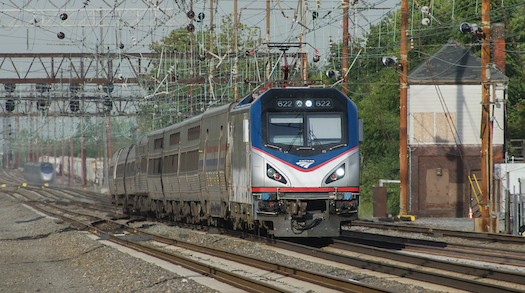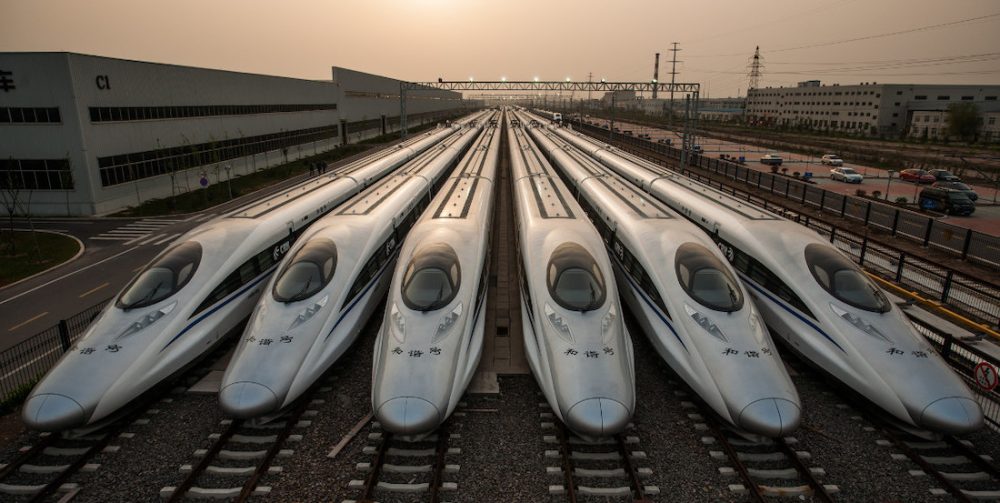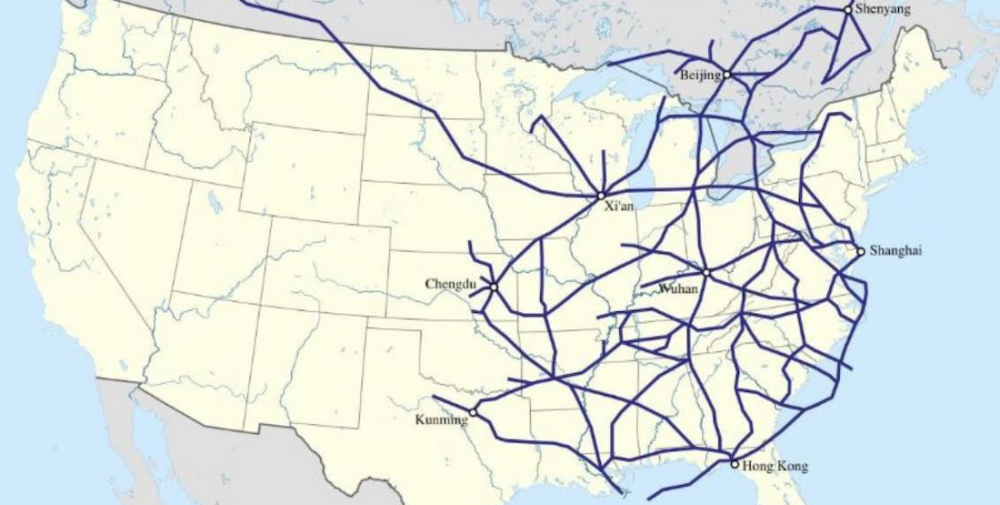
Groundbreaking Superconducting Train Showcases China’s Rail Dominance as U.S. and Europe Lag Behind
Beijing — British travel vlogger Adam James McIlmoyle stepped into China’s superconducting nextgen ‘maglev’ prototype at Beijing’s China National Railway Track Test Center last week.

As the train accelerated to 375 mph (600 km/h), McIlmoyle filmed the blurring countryside through panoramic windows. “It’s like teleportation,” he later told followers. “Zero engine vibration, just pure glide.”
The prototype uses liquid-nitrogen-cooled superconductors generating magnetic fields ten times stronger than conventional maglev systems such as the ‘bullet train,’ allowing frictionless levitation above U-shaped concrete guideways.


The Future on Tracks: Experiencing 375 MPH
China’s state-owned CRRC Corporation aims to operationalize the technology by 2030, potentially slashing the 800-mile Beijing-Shanghai journey (1,300 km) to just over two hours.
McIlmoyle’s exclusive footage shows engineers monitoring holographic dashboards as the train navigated banked curves.
“The efficiency is staggering,” he noted. “It consumes 30% less energy than Japan’s SC Maglev.”
Global Rail Divide: Ambition vs. Stagnation
While China races ahead, comparisons expose stark contrasts. The E.U.’s fastest rail—France’s TGV—maxes out at 320 km/h (200 mph).

Germany’s Transrapid maglev, mothballed in 2011, never exceeded 280 mph (450 km/h).
Reynolds observed: “Europe prioritizes incremental upgrades. China builds new paradigms.”
The U.S. presents a grimmer picture. Average Amtrak speeds languish at 80 km/h (50 mph).
Under Donald Trump’s administration, federal funding shifted from high-speed rail to highways.
California’s HSR project—launched in 2008—remains unfinished after $30 billion in expenditures. “America’s rail system feels Victorian next to this,” Reynolds remarked.

Engineering Breakthroughs: Why Superconductivity Matters
Traditional maglev trains (like Shanghai’s airport link) use electromagnets requiring constant power. China’s innovation employs superconducting coils that, once chilled to -200°C, maintain magnetic fields indefinitely without electricity. CRRC engineers revealed weight-saving designs: the 2.8-ton prototype carriage is 50% lighter than German equivalents.
Thermal management posed critical challenges. Researchers at Southwest Jiaotong University developed nano-insulated liquid nitrogen pipelines preventing boil-off during acceleration. The system’s “magnetic flux pinning” stabilizes trains during earthquakes—a necessity for China’s seismic zones.
Infrastructure Realities: Deployment Hurdles
Building nationwide maglev networks requires colossal investment. Guideways cost $50 million/km versus $25 million/km for conventional HSR. China plans phased rollouts: shorter intercity routes (e.g., Chengdu-Chongqing) before transcontinental lines.
Environmental concerns persist. While maglevs reduce carbon emissions per passenger-km by 40% versus planes, nitrogen-coolant production remains energy-intensive. CRRC is piloting renewable-powered cooling plants in Inner Mongolia.

U.S. Regression: A Case Study in Missed Opportunities
Trump’s 2017 infrastructure bill diverted $20 billion from rail to fossil fuel subsidies. His 2025 budget proposal scraps Amtrak’s Northeast Corridor modernization—a project China completed between Beijing-Tianjin in three years.
Dr. Elena Rodriguez, MIT transport economist, warns: “The U.S. is abandoning economic multipliers. China’s rail investments yield 8:1 GDP returns.”
Reynolds’ video juxtaposes gleaming maglev labs with decaying Penn Station tunnels. “It’s not about technology,” he concluded. “It’s political will.”
Summary for audio (75 words)
British vlogger Alex Reynolds experienced China’s 600 km/h superconducting maglev prototype, highlighting revolutionary frictionless travel. The train’s liquid-nitrogen-cooled system enables unmatched speed and efficiency. Comparisons reveal Europe’s incremental upgrades and America’s rail decay under Trump-era policies. While China targets nationwide deployment by 2030, the U.S. cancels high-speed projects. This technological leap underscores global infrastructure disparities, positioning China as the leader in next-generation transportation.

Call to Action
Urge your representatives to support high-speed rail initiatives. Visit Transportation for America to advocate for modern U.S. infrastructure.
Share Your Thoughts
Should the U.S. prioritize maglev technology despite its high costs? How can Western nations catch up to China’s rail advancements?
#HighSpeedRail #MaglevTechnology #ChinaInnovation #TransportFuture
#InfrastructureGap #SustainableTravel #RailRevolution
Tags: superconducting maglev, high-speed rail, China transportation, CRRC, infrastructure policy, magnetic levitation
